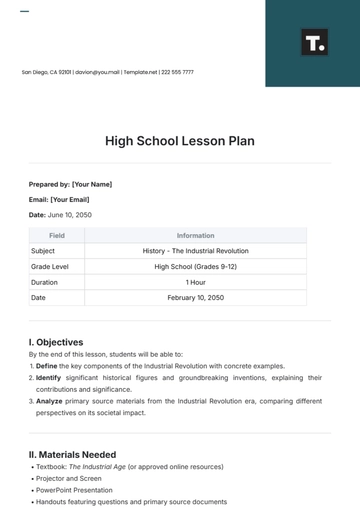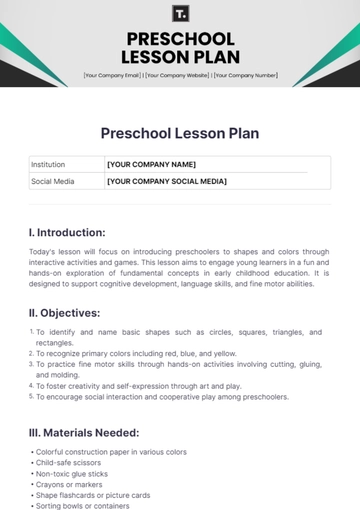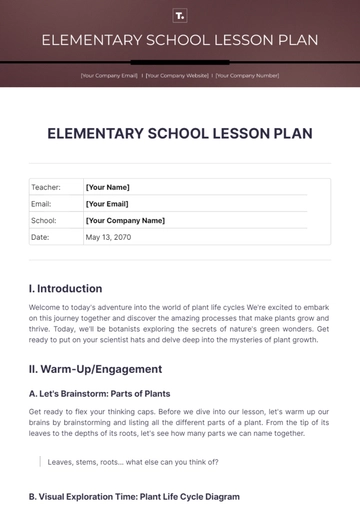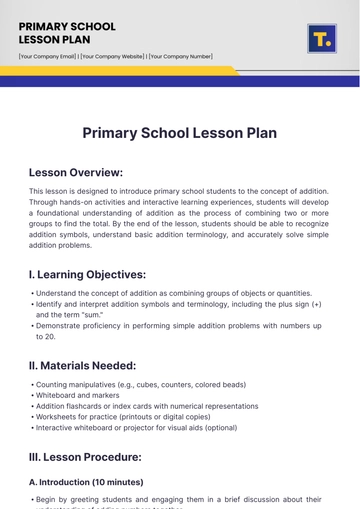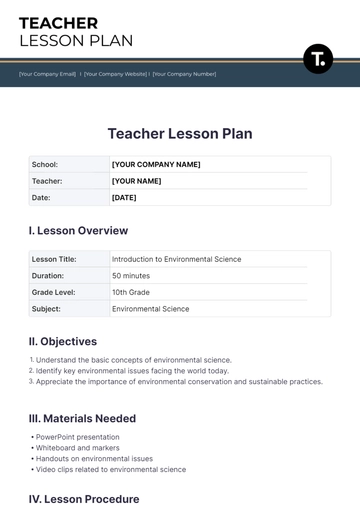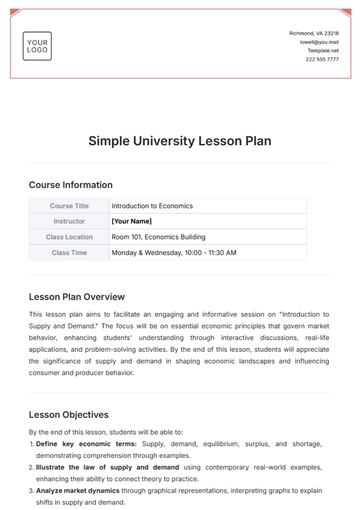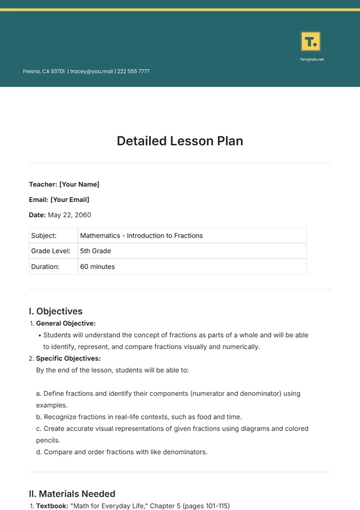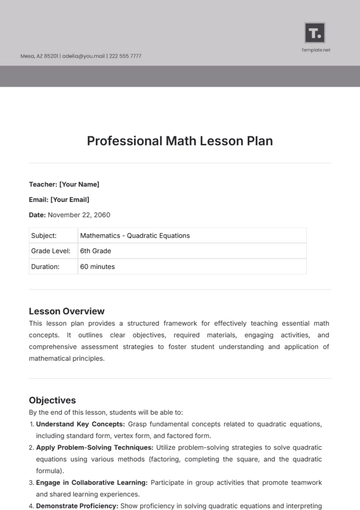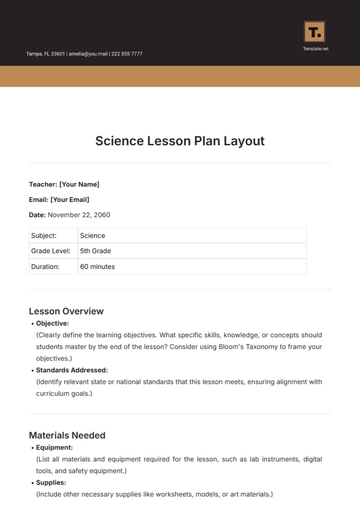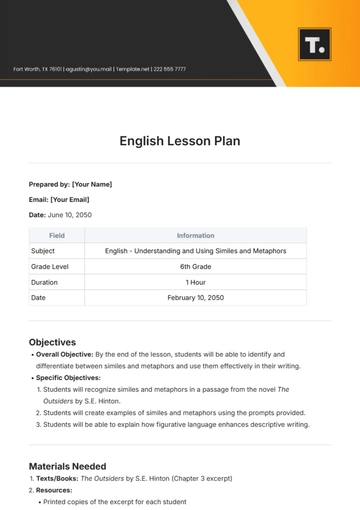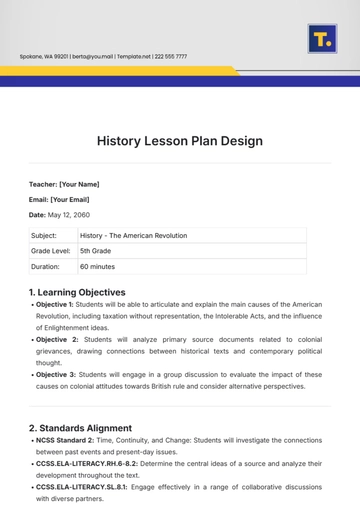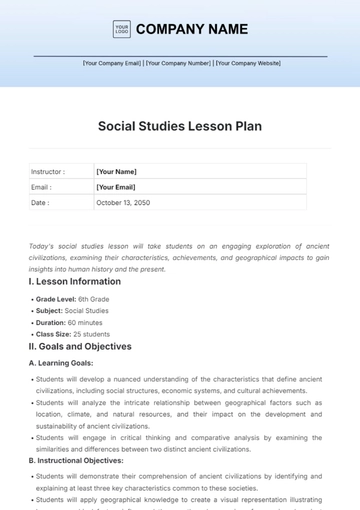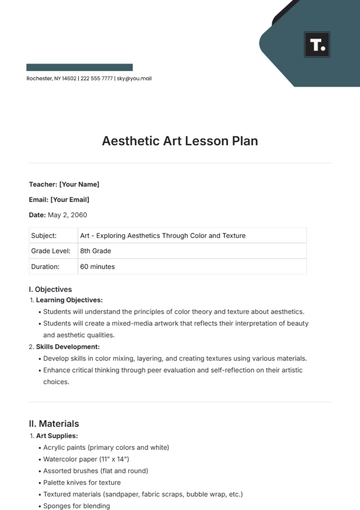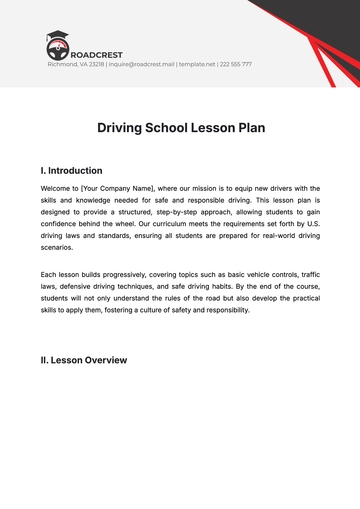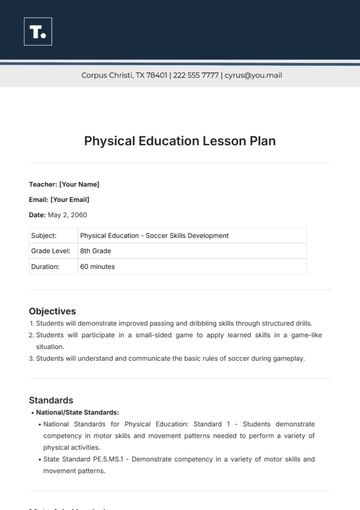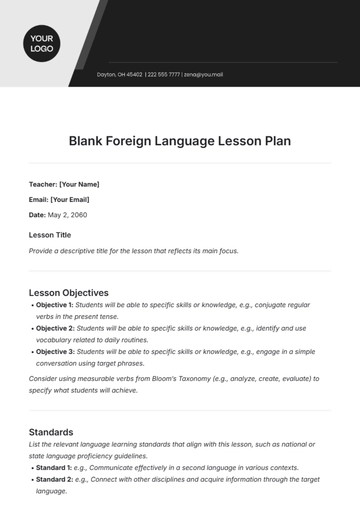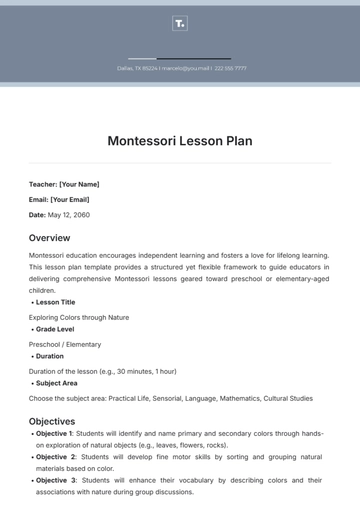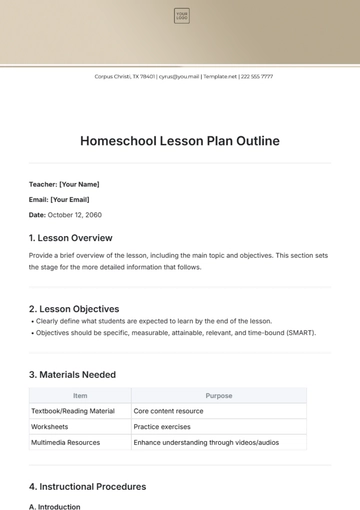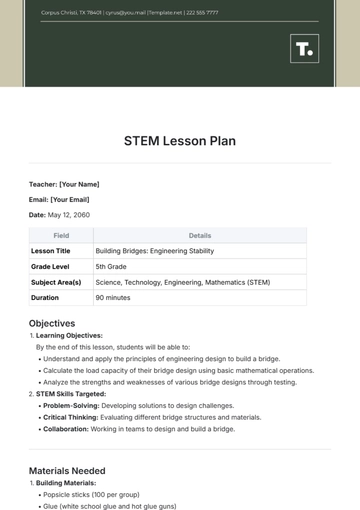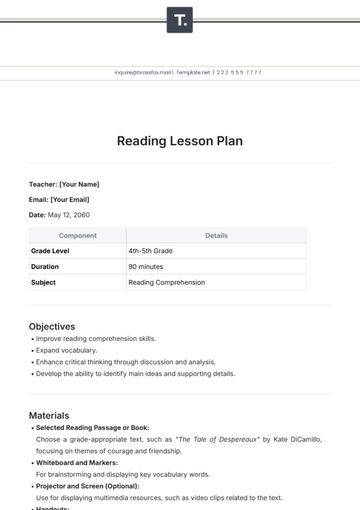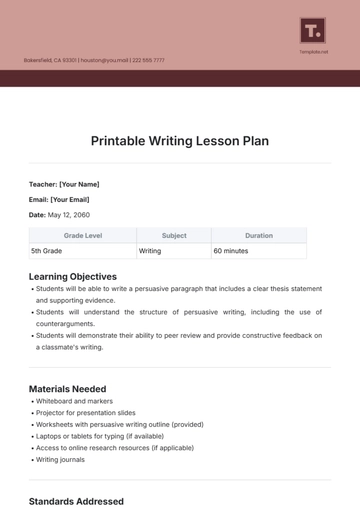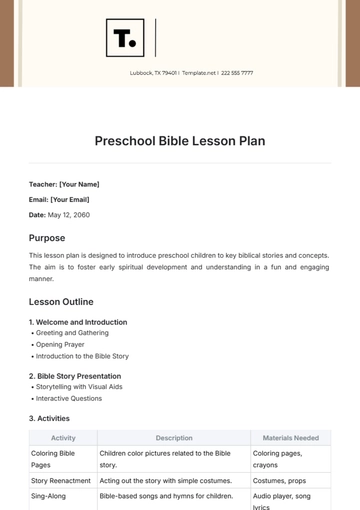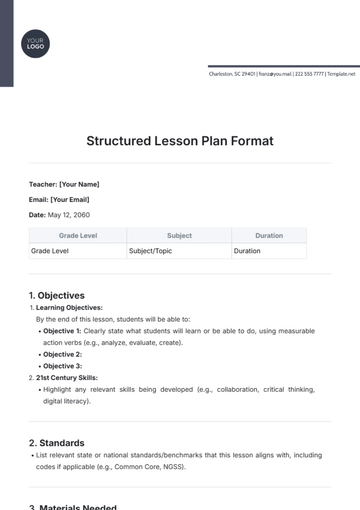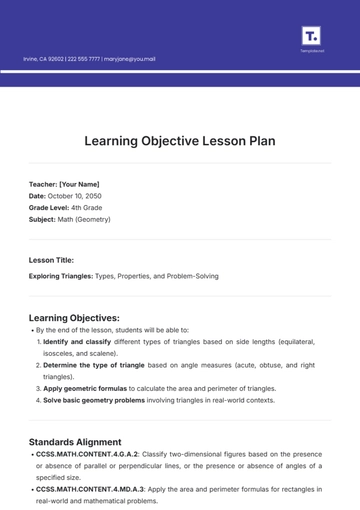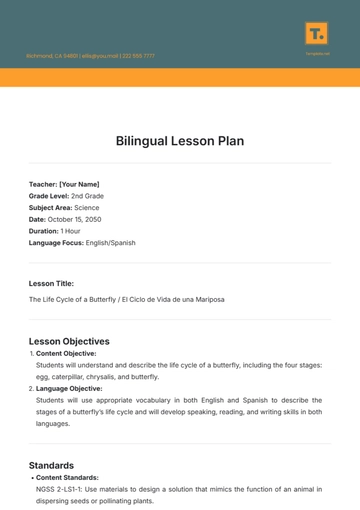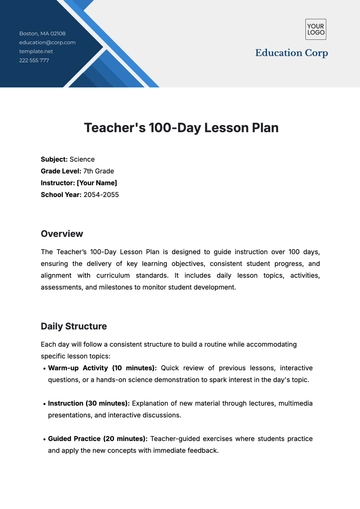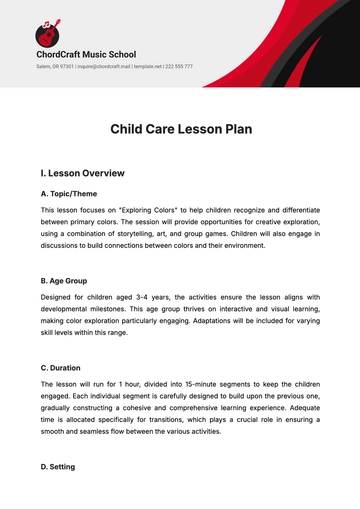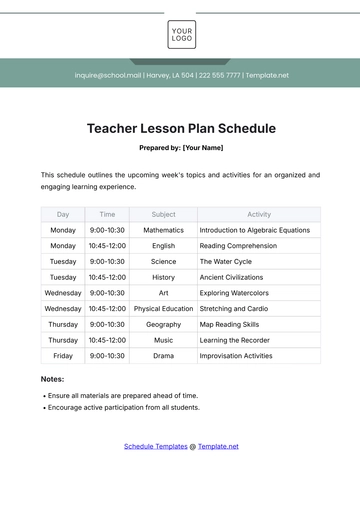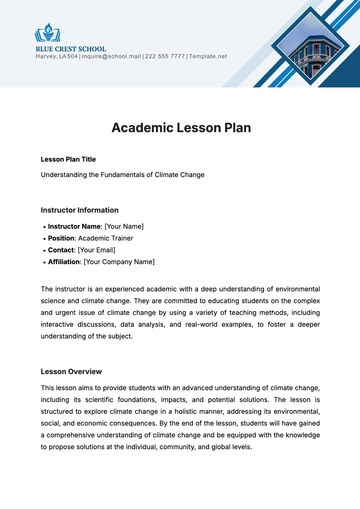Free Education Lesson Plan

Date: September 12, 2050
Grade Level: 9-12
Subject: Digital Citizenship
Duration: [90] minutes per session (3 sessions)
Learning Objectives:
Students will develop a deep understanding of digital citizenship concepts, focusing on privacy, ethical behavior, and responsible online communication.
Students will demonstrate their ability to engage safely and ethically in digital spaces.
Students will create a personal digital footprint management plan.
I. Introduction to Digital Citizenship
A. Importance of Digital Citizenship in 2050
Understanding Digital Citizenship:
Digital citizenship in 2050 goes beyond the basic concepts of online safety and social media etiquette introduced in earlier decades. In this futuristic world, digital presence is integrated into nearly all facets of personal and professional life. Whether students are participating in augmented reality learning environments, using AI-powered social media, or engaging with smart city technologies, their actions in these digital spaces carry significant consequences.Why Digital Citizenship is Important in the Year 2050:
The future brings more interconnected systems, from wearable health monitors to autonomous transportation, making privacy, data integrity, and ethical online behavior critical life skills. In this hyper-connected world, understanding how to responsibly navigate digital spaces isn't just beneficial; it's essential for personal safety, professional success, and societal well-being.
B. The Evolution of Technology and its Impact on Society
From Web 2.0 to Web 5.0:
By 2050, the internet has evolved into an immersive, ubiquitous presence powered by AI, quantum computing, and neural networks. Web 5.0 marks the next phase of hyper-intelligent interactions, where users not only consume information but interact with fully immersive, personalized environments. This requires a more profound understanding of how individuals’ actions can affect their digital footprint, identity, and data privacy.AI and Automation in Everyday Life:
In 2050, AI has become a daily part of life, influencing everything from education to healthcare. Automated systems gather immense amounts of personal data, and users need to be aware of how this data is stored, shared, and utilized by corporations and governments. Thus, digital literacy has expanded to include data management and awareness of AI-driven bias.
C. Learning Objectives
By the end of the lesson, students will be able to:
Define and explain the key concepts of digital citizenship, privacy, and data integrity.
Demonstrate how to engage in ethical behavior in online spaces, including respecting the privacy of others.
Understand the implications of creating and managing their personal digital footprint.
Identify strategies for protecting their data in a world increasingly dominated by AI and automation.
II. Digital Privacy and Data Protection in 2050
A. The Concept of Privacy in a Hyper-connected World
Defining Privacy in 2050:
Privacy in the year 2050 includes controlling who has access to one’s digital data, identity, and online activities. With the rise of biometric authentication (e.g., retina scans, voice recognition), personal data is embedded in every interaction. Students will learn to differentiate between voluntary and involuntary data sharing.Case Study: Personal Data Leaks:
Review a high-profile case from 2049 where a massive leak of biometric data compromised the identity of millions. This study will help students understand the long-term impacts of personal data breaches and the importance of securing personal information.
B. Data Encryption and Security Measures
Encryption Technologies of 2050:
Data encryption has advanced, employing quantum-resistant algorithms that protect against the computational power of future quantum computers. Discuss how these technologies work, and how students can use encrypted services for personal communication and data storage.Security Protocols for Personal Devices:
Explain common security protocols in 2050, such as using multi-factor authentication (MFA) that combines traditional passwords with biometric data and neural implants. Students will learn to configure these settings on their own devices for maximum protection.
C. Classroom Activity: Privacy Simulation
Activity Overview:
In this activity, students will participate in a digital privacy simulation where they act as users in a smart city environment. They will encounter different scenarios—such as signing up for a service, using a biometric payment system, or navigating through public Wi-Fi networks—and must decide how much data to share.Discussion Points:
What risks are associated with data sharing in a smart city?
How can individuals mitigate those risks while using necessary services?
How might misuse of data lead to long-term impacts on personal freedom and privacy?
III. Responsible Communication and Ethics in Online Spaces
A. Ethical Guidelines for Online Interactions
Ethical Behavior in Virtual Environments:
In 2050, many interactions take place in immersive virtual environments, making it necessary to establish norms for ethical behavior, such as respecting virtual boundaries and acknowledging the value of digital property. Students will discuss why ethical behavior is even more critical in these lifelike environments where actions feel as real as in the physical world.The Role of AI in Moderating Communication:
With AI moderating online conversations, students will explore the limits and challenges of automated content filtering. They will learn the ethical responsibilities of AI in moderating speech, as well as the importance of human oversight to avoid bias and discrimination in automated systems.
B. Understanding Cyberbullying and Online Harassment
Cyberbullying in the Era of Immersive Internet:
Online harassment has taken on new forms in immersive digital worlds where individuals can create avatars and engage in lifelike environments. Cyberbullying is not just limited to text and images but now includes sabotage of virtual properties or manipulation of AI assistants.Addressing Harassment in Digital Communities:
Discuss strategies for dealing with harassment, including reporting mechanisms, blocking features, and AI-driven anti-bullying interventions. Students will work on identifying harmful behavior and learn how to constructively respond when they or others experience harassment.
C. Classroom Activity: Ethical Dilemmas in Virtual Spaces
Activity Overview:
In small groups, students will be presented with ethical dilemmas in virtual environments. These could include situations like whether to intervene in a case of harassment or whether to share private data with a teacher in a learning simulation. Students will present their decisions to the class, explaining their reasoning and exploring the ethical implications of their choices.Expected Outcomes:
By the end of this activity, students should be able to critically assess ethical dilemmas in online spaces and propose constructive solutions that uphold the values of respect, fairness, and safety.
IV. Managing Digital Footprints
A. The Concept of a Digital Footprint in 2050
What is a Digital Footprint?
A digital footprint refers to the data left behind by individuals as they interact with digital technologies. By 2050, digital footprints have expanded to include not only social media activity but also interaction with smart devices, AI assistants, and even biometric data recorded through healthcare technologies. Understanding the permanence of a digital footprint is crucial for future generations.Personal and Professional Implications:
Students will explore how their digital footprint affects both their personal and professional lives. They will learn how employers, universities, and even governments may analyze their digital footprints to assess character, skills, and behaviors.
B. Strategies for Controlling and Minimizing Digital Footprints
Minimization Techniques:
Teach students the strategies to reduce their digital footprint, such as regular privacy audits, disabling data-sharing settings in apps, and using encrypted communication platforms. Discuss the importance of balancing digital engagement with protecting personal information.AI Tools for Managing Digital Presence:
Introduce students to AI-driven tools that can help them manage their digital footprint by identifying potentially harmful content or old posts that should be deleted. These tools also help analyze their online presence, offering personalized suggestions for enhancing digital reputation.
C. Classroom Activity: Creating a Personal Digital Footprint Management Plan
Activity Overview:
Students will develop a digital footprint management plan. This will include auditing their current online presence, identifying areas for improvement, and outlining steps to ensure they leave a positive and minimal digital trail moving forward.Expected Outcomes:
By the end of the session, students should be able to create a personalized strategy for maintaining a professional and responsible digital footprint that can evolve with technological advancements.
V. Conclusion and Assessment
A. Summary of Key Concepts
Students will revisit the main themes covered: digital privacy, ethical behavior in online spaces, managing digital footprints, and the significance of these skills in the rapidly evolving digital landscape of 2050.
B. Final Assessment
Digital Citizenship Quiz:
Students will take a quiz assessing their understanding of digital citizenship principles. The quiz will include multiple-choice questions, short answers, and scenario-based questions. Topics will cover privacy, data security, ethical dilemmas, and the importance of managing one's digital footprint.Presentation of Digital Footprint Management Plans:
Each student will present their digital footprint management plan to the class, explaining the steps they took to secure their data and manage their online presence. The presentation will encourage peer feedback and discussion of best practices.
C. Homework Assignment
Students will write a reflective essay about the most significant digital citizenship challenge they foresee in the future and how they plan to address it using the tools and strategies learned in this lesson.
VI. Supplementary Resources
A. Suggested Reading
Books:
"The Future of Privacy" by Dr. Ellen Zhang (2050 Edition)
"Ethics in Digital Spaces: A Guide for the 2050s" by Marcus Reid
Articles:
"AI Moderation: Balancing Free Speech and Safety in the Digital Era" (Virtual Journal of Technology, 2050)
"The Expanding Digital Footprint: What Future Generations Need to Know" (CyberReview, 2049)
B. Technology Resources
Digital Citizenship Management Apps:
AI Privacy Assistant: A tool for managing and encrypting personal data.
Footprint Scanner: AI-powered software that analyzes digital presence and provides recommendations for minimizing data exposure.
Virtual Learning Platforms:
EduVR: A virtual learning platform that simulates real-world ethical dilemmas in digital citizenship.
- 100% Customizable, free editor
- Access 1 Million+ Templates, photo’s & graphics
- Download or share as a template
- Click and replace photos, graphics, text, backgrounds
- Resize, crop, AI write & more
- Access advanced editor
Create engaging lesson plans with the Education Lesson Plan Template from Template.net. This editable and customizable template helps educators plan effective lessons. Use our Ai Editor Tool to tailor the plan to your classroom's needs.
